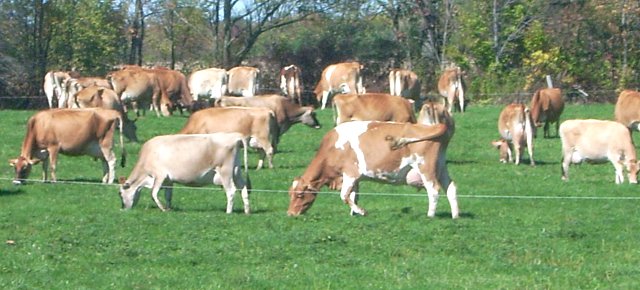(Economic analysis provided by the Livestock Marketing Information Center, a joint venture of 29 state Extension services.)
DENVER — Two years of high feed costs have taken a financial toll on many dairy farmers.
The milk feed cost ratio registered its lowest level since 1984 in July 2012, even worse than 2009’s. Milk prices will not catch up with rising input costs for many dairies, and cow liquidation, which began in 2012, will likely persist well into 2013.
A smaller herd will translate into lower milk production and a ratcheting up of milk prices into 2014.
With normal U.S. corn and hay crops, dairy farmers are forecast to return to profitability in late 2013.
For the next several years, dairy producers and processors will be faced with changes on both the supply and demand side of the economic environment which were set in motion during 2012.
Review of 2012
Record high feed prices in 2011 left slim margins despite record high milk prices. Many dairies weathered the high feed costs by decreasing equity, which set a precarious stage for 2012.
Prior to drought erupting across the country in 2012, feedstuff costs were expected to weaken with normal growing conditions. However, as the 2012 growing season progressed, both forages and corn prices pushed higher as crop conditions worsened.
A mild winter contributed to large gains in milk production, which combined with year-over increases in cow numbers translating into a glut in milk supply and caused prices to decline rapidly over the first half of 2012.
Aggressive culling
In the second half of 2012, some dairies began to aggressively liquidate cows. High cull cow prices facilitated moving animals to market. Dairy cow slaughter was nearly 5,000 head per week above a year ago in much of the summer quarter of 2012, a trend that will continue through the end of the year.
The reduction in herd inventory capped the growth on milk supply and milk prices will remain steady to higher in last few months of 2012.
Quarterly projections are for milk per cow to be barely above a year ago in the summer quarter due to very hot weather and high feedstuff costs. Milk per cow will continue to be tempered in the fourth quarter.
Still, after a strong winter and spring, milk per cow will still be on trend, increasing at over 1 percent for the whole year.
Export bag mixed
Major dairy product export categories posted mixed results, both below and above year ago levels. In the July data, export gains were moderating.
Year-to-date figures indicate that even with July showing a slump, most categories remained ahead of the previous year.
Cheese, whey and buttermilk had the strongest growth, posting double digit percentage increases from a year ago.
In the third and fourth quarters of this year, milk production is expected to be essentially unchanged from a year ago. This is a marked change from first and second quarters, which recorded gains of 4 percent and 2 percent year-over-year, respectively.
Price prediction
Price forecasts for 2012 are $17 per cwt. for Class III and $17.65 per cwt. for all milk. Prices will be notably higher in the second half of the year after the second quarter dropped to the lowest level in over a year.
Still, prices in the third and fourth quarters will remain below 2011. The third quarter of 2011 set a record high for milk prices and 2012 for that quarter this year will be well short of that number, posting double digit percentage drop.
Throughout the fourth quarter, prices will continue to increase, but the quarter will likely average 2 percent to 5 percent below 2011.
Outlook for 2013
Cowherd reductions are likely to continue well into 2013.
The USDA-NASS January cattle inventory is expected to show 9.130 million dairy cows in the herd, a loss of about 100,000 head of cattle compared to a year earlier.
As the year progresses, producer milk prices will likely have greater upside potential.
The speed at which milk production declines will have a dramatic effect on prices. Decreasing in cow numbers will continue until milk price and feed costs reach a level of profitability.
This is will hinge on new crop hay and corn becoming available in 2013 and dairy products demand remaining at least stable with the prior year.
U.S. milk production for the calendar year is expected to be smaller than 2012, totaling about 198.4 million pounds and representing less than a 1 percent annual decline.
2013 price forecast. For the calendar year, the Livestock Marketing Information Center forecasts are for Class III milk to be close to record high averaging $19.75-$21.25 per cwt., with all milk $20.50-$23.
However, if herd reductions come more quickly milk prices could easily be higher.
2014 prospects
In 2014, dairy herd reductions should end and reach an inflection point in the national cow herd number. In the second half of the year, dairy cow numbers could begin to rise.
Processors will be most affected by rising milk costs during the first half of 2014. Record high milk prices are expected in the first half of the year and then weakening could happen.
Still, herd inventory will likely not increase at the same rate of reductions. It will likely take several quarters to reach the point where year-over-year gains are made in cow numbers.
Annual average Class III is forecast by the LMIC to be $21.50-$23.50 per cwt. and all milk $22.75-$24.75. However, downside risk is much more probable in 2014, if 2013 prices are greater than predicted.
With a normal feedstuff crop, dairy farmers should be profitable and their financial positions notably improved compared to 2012.










